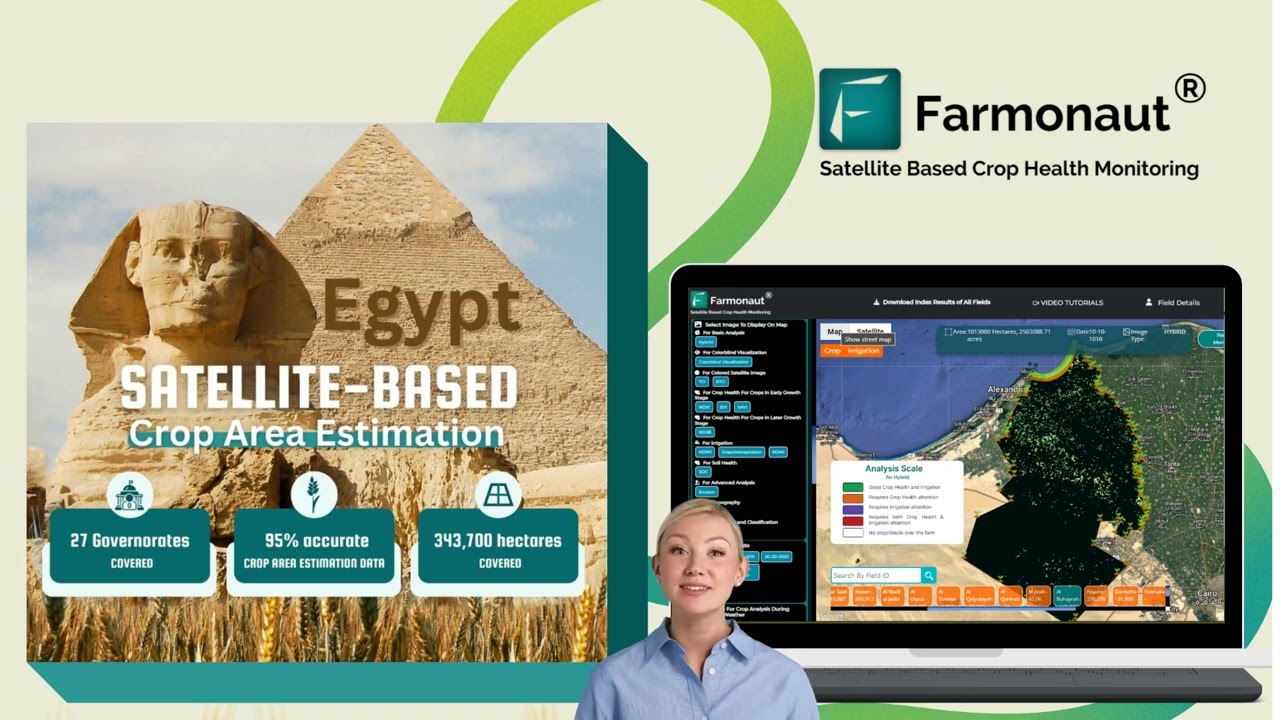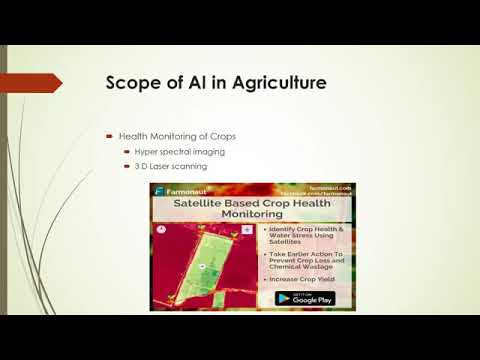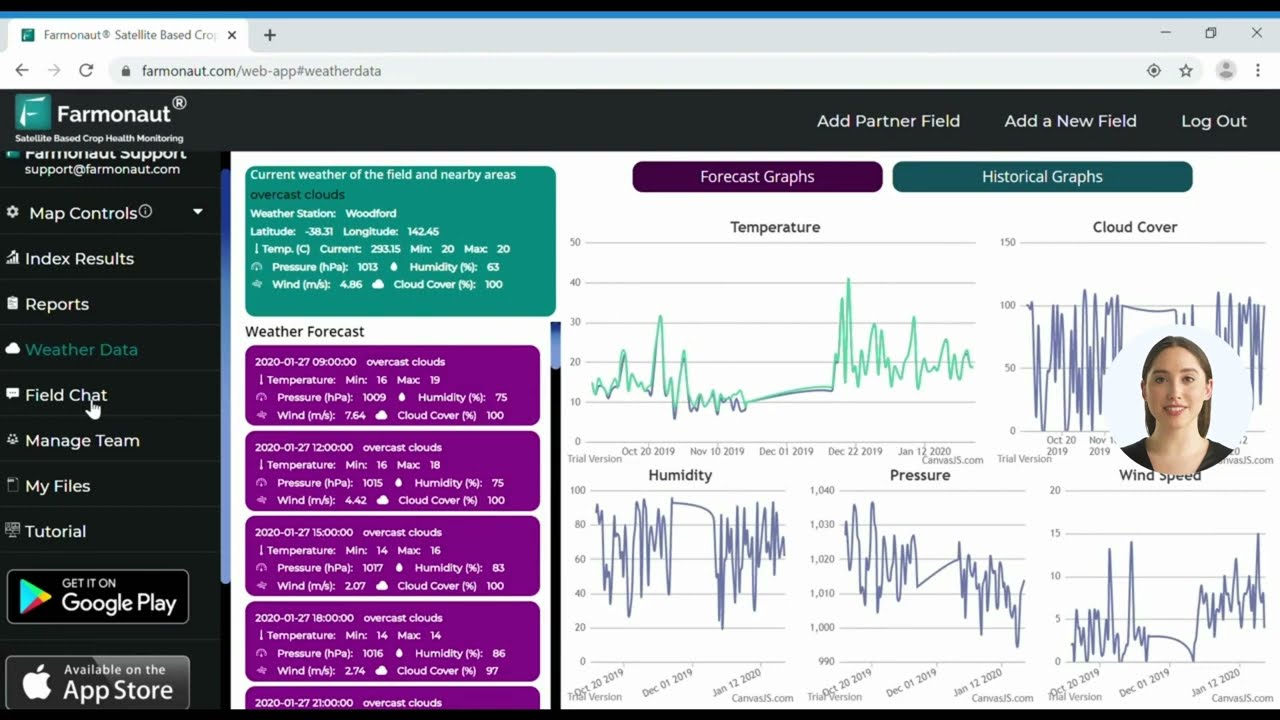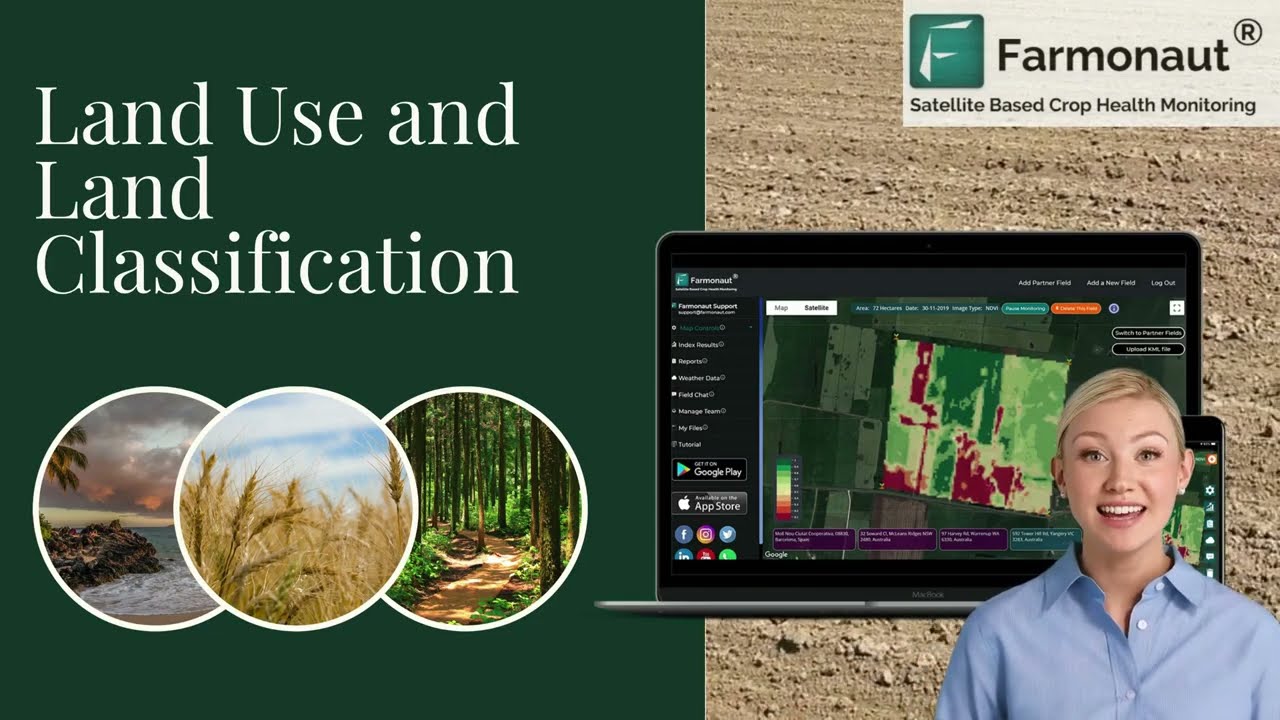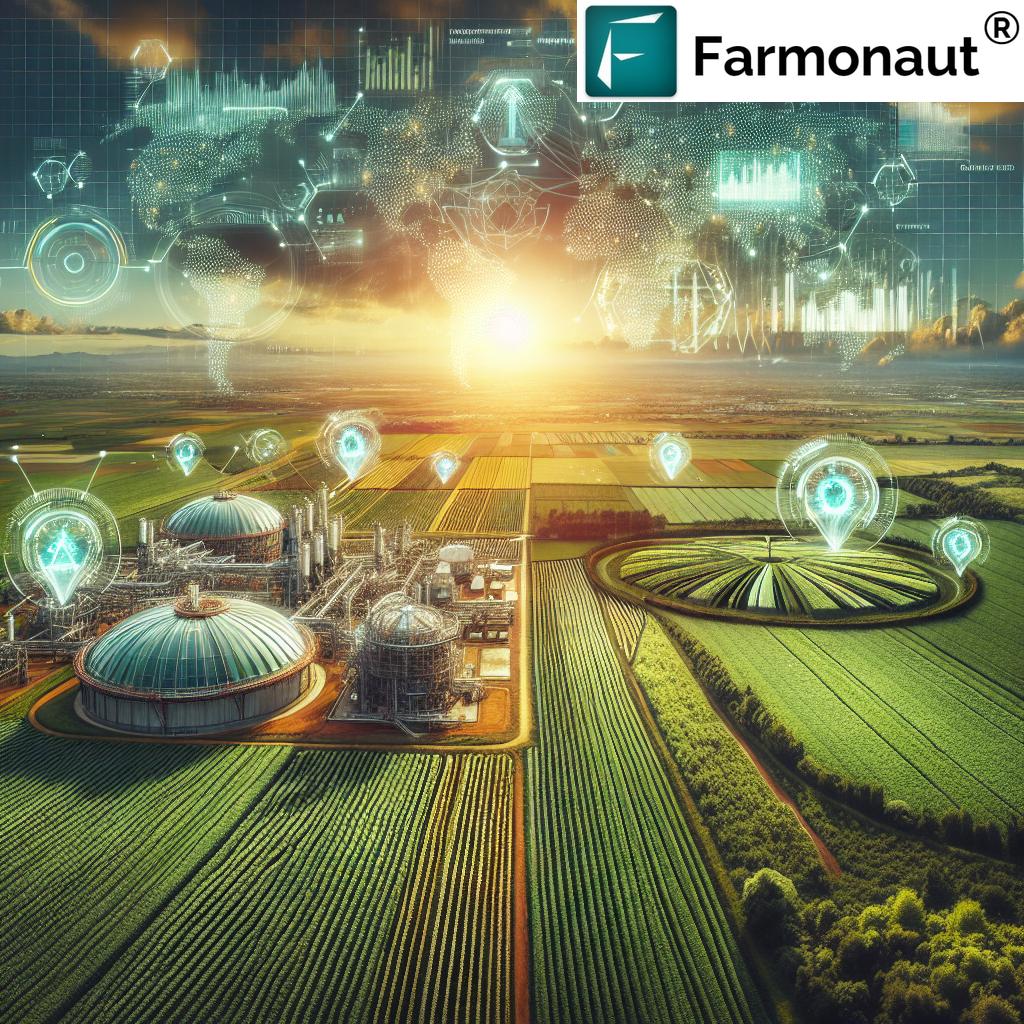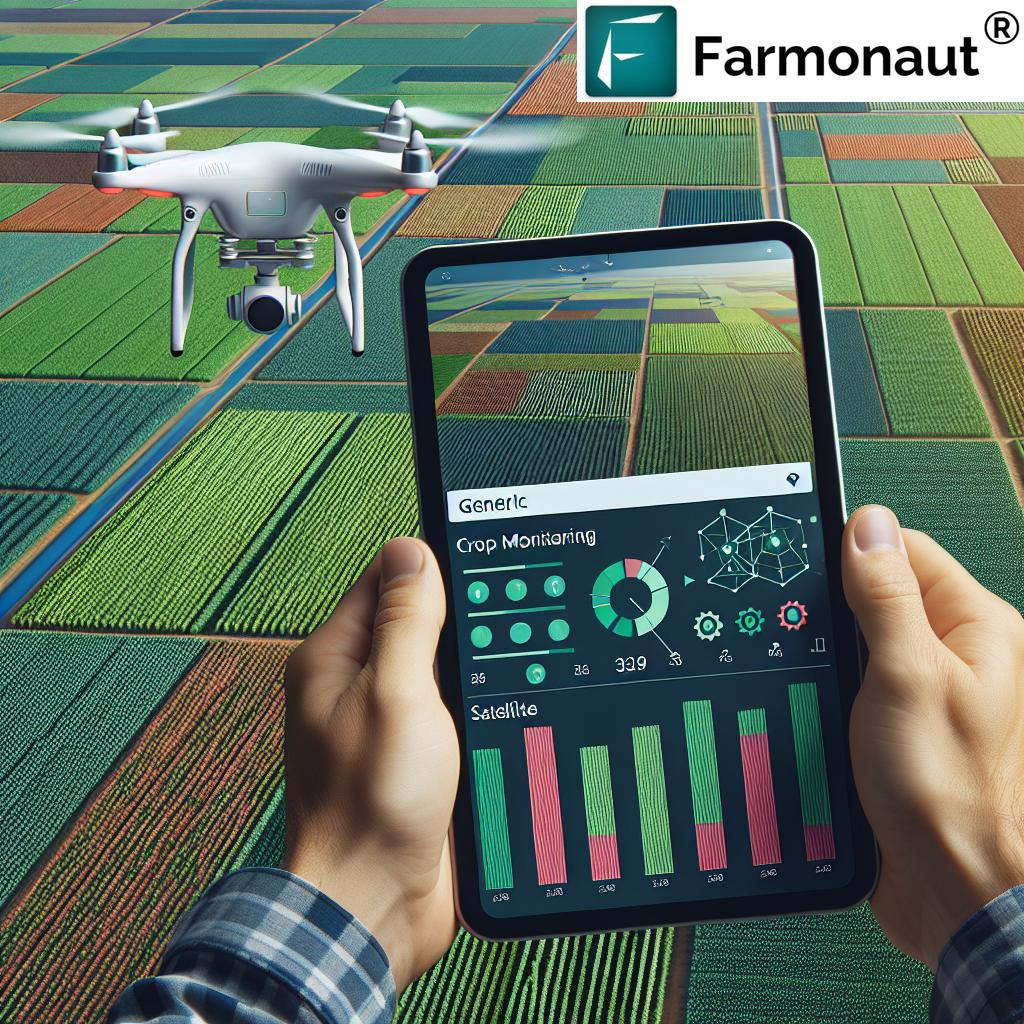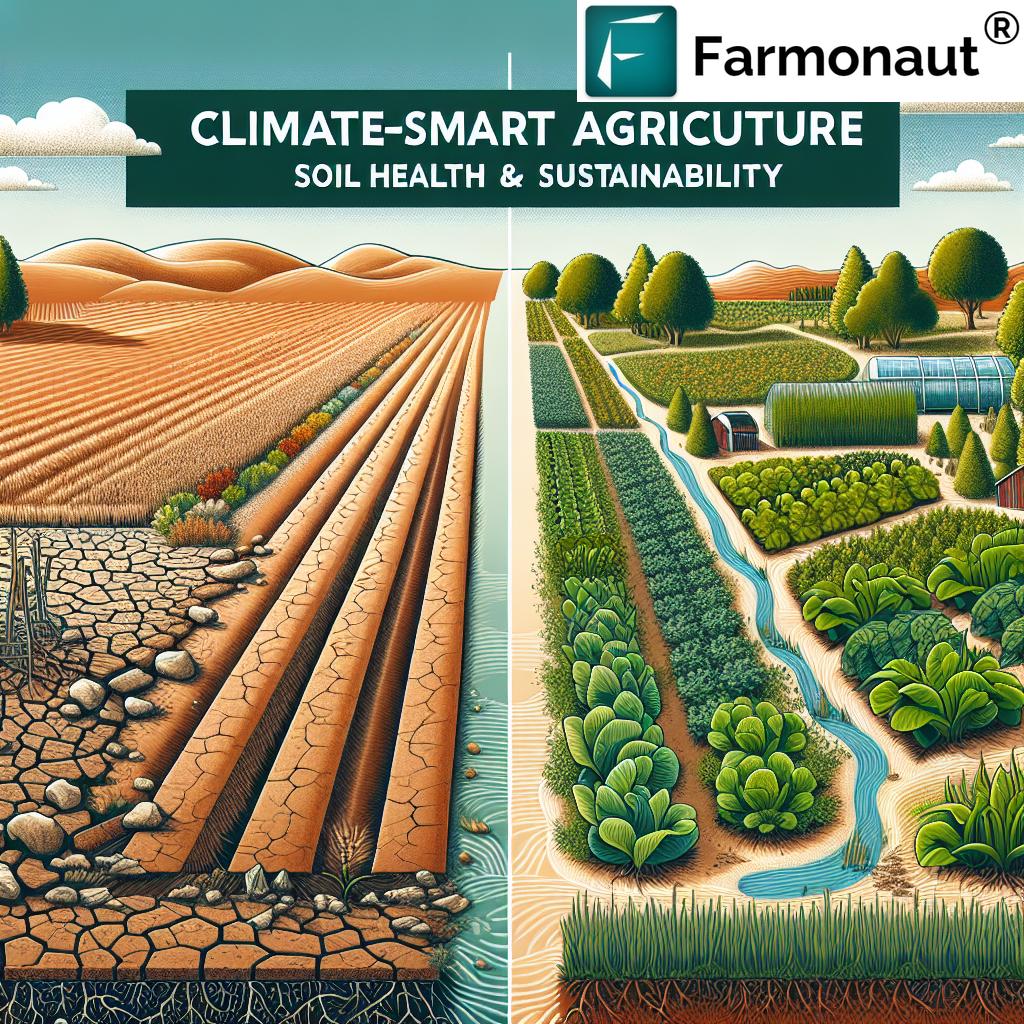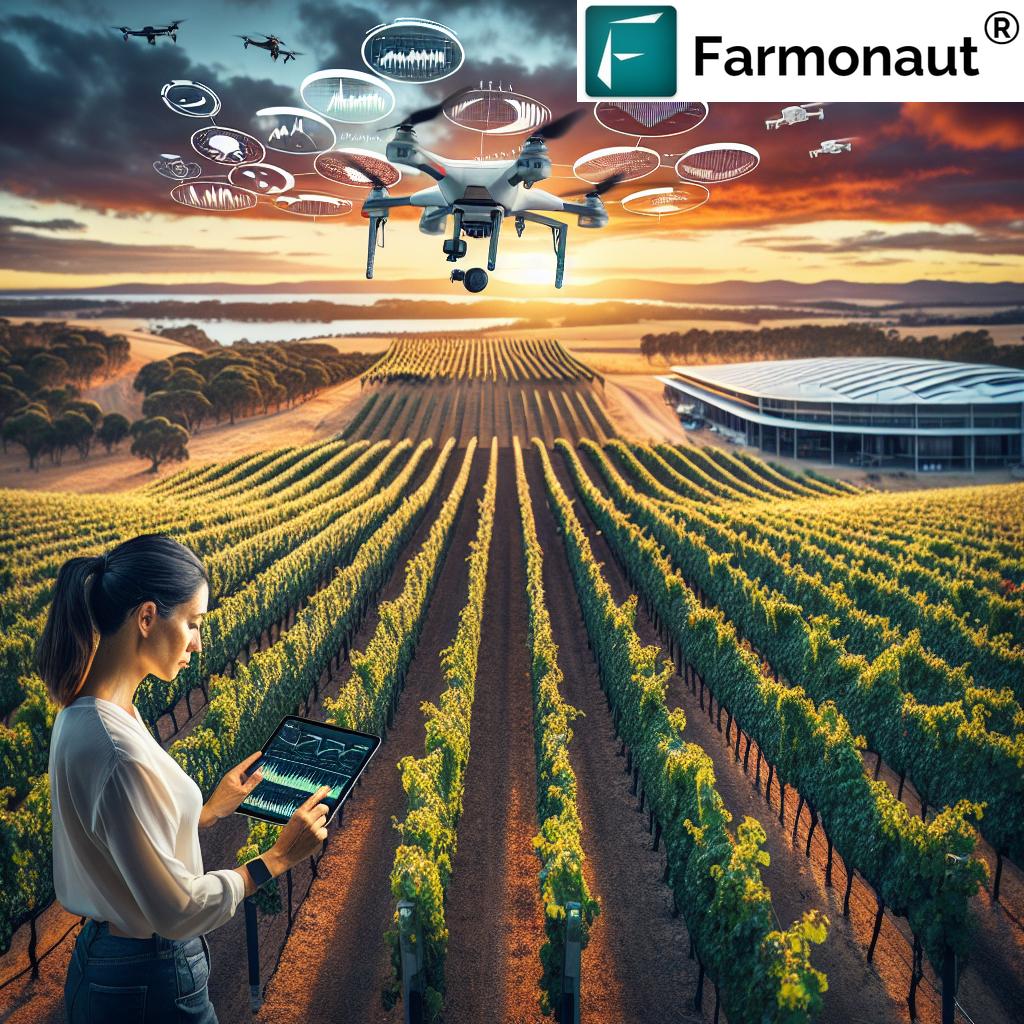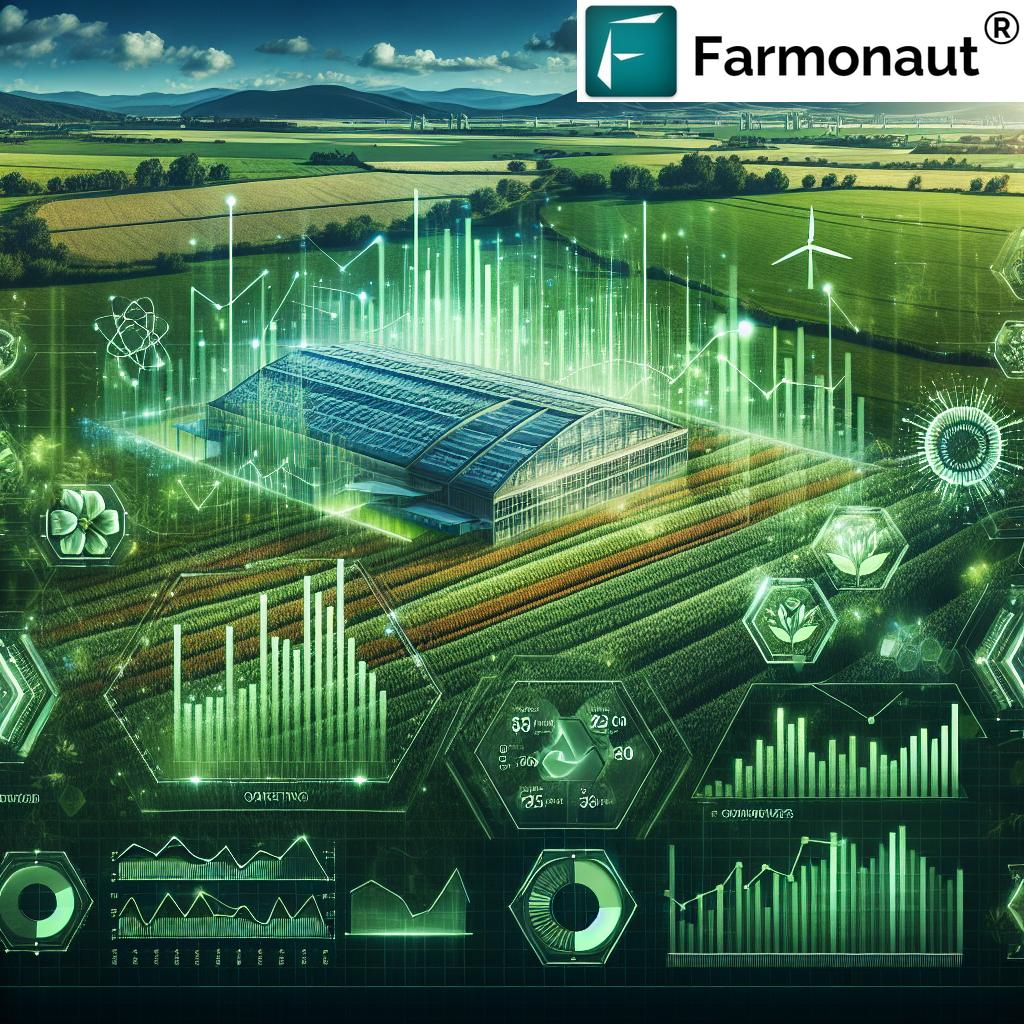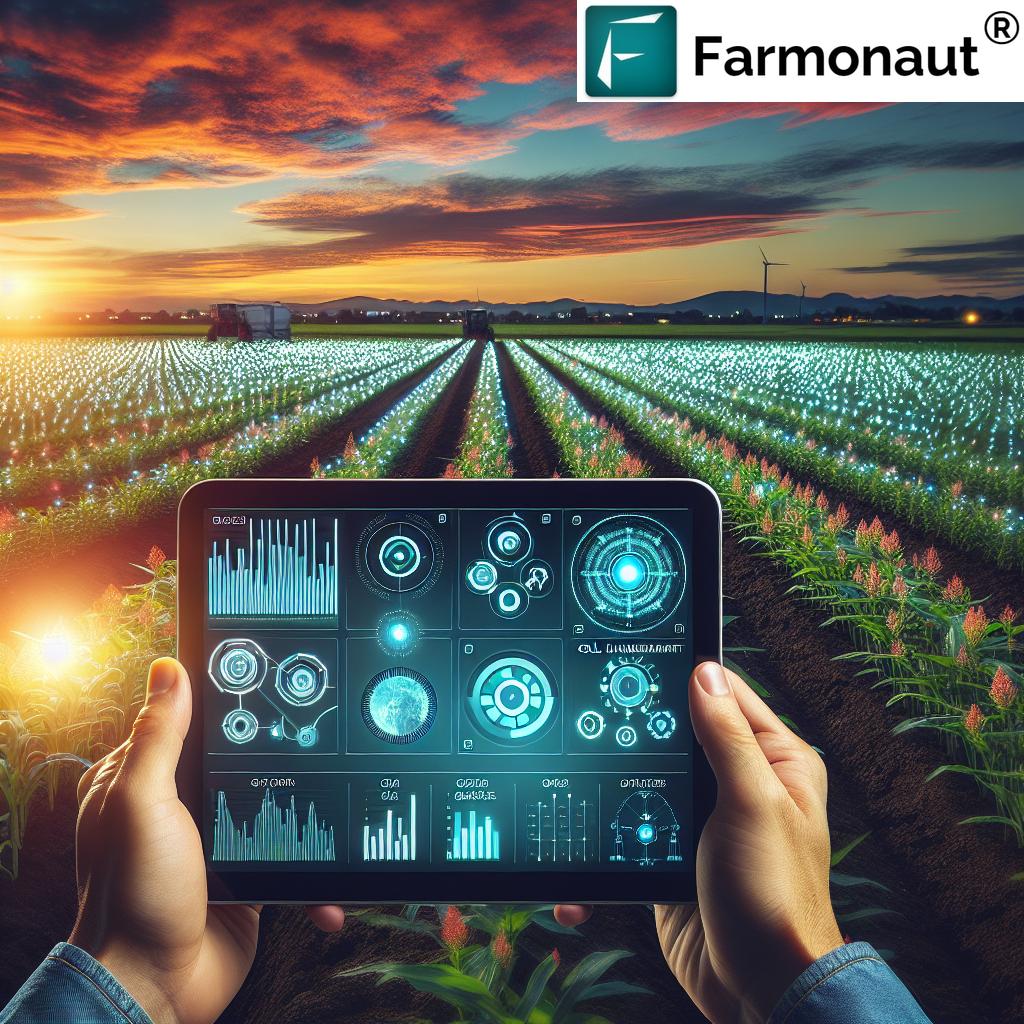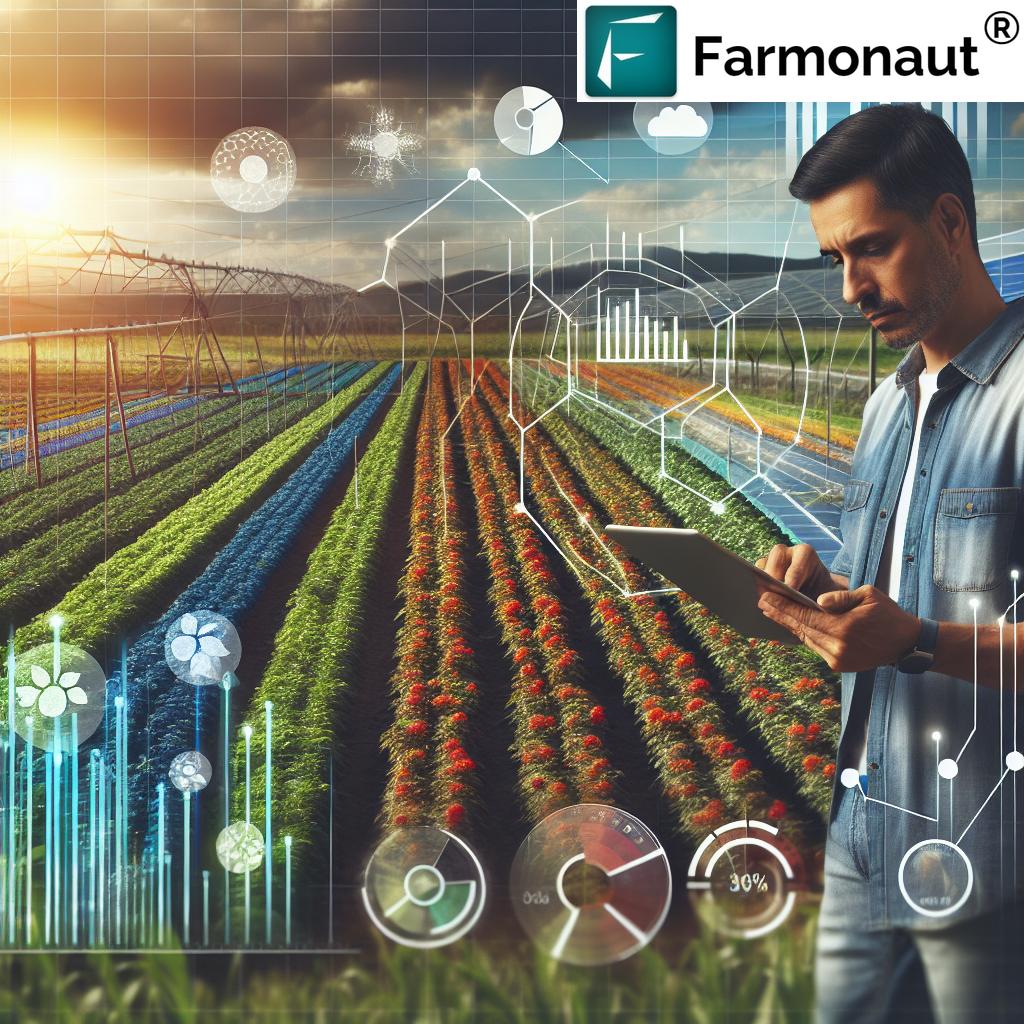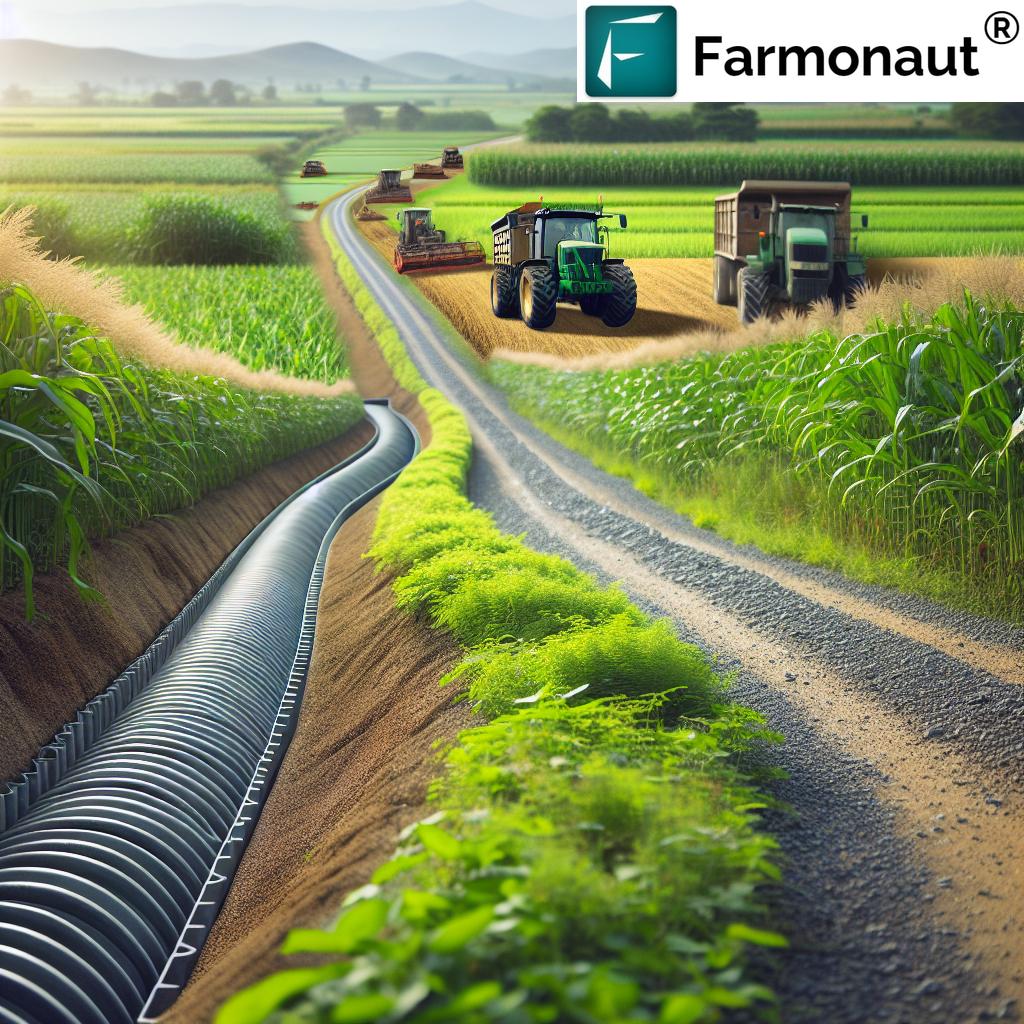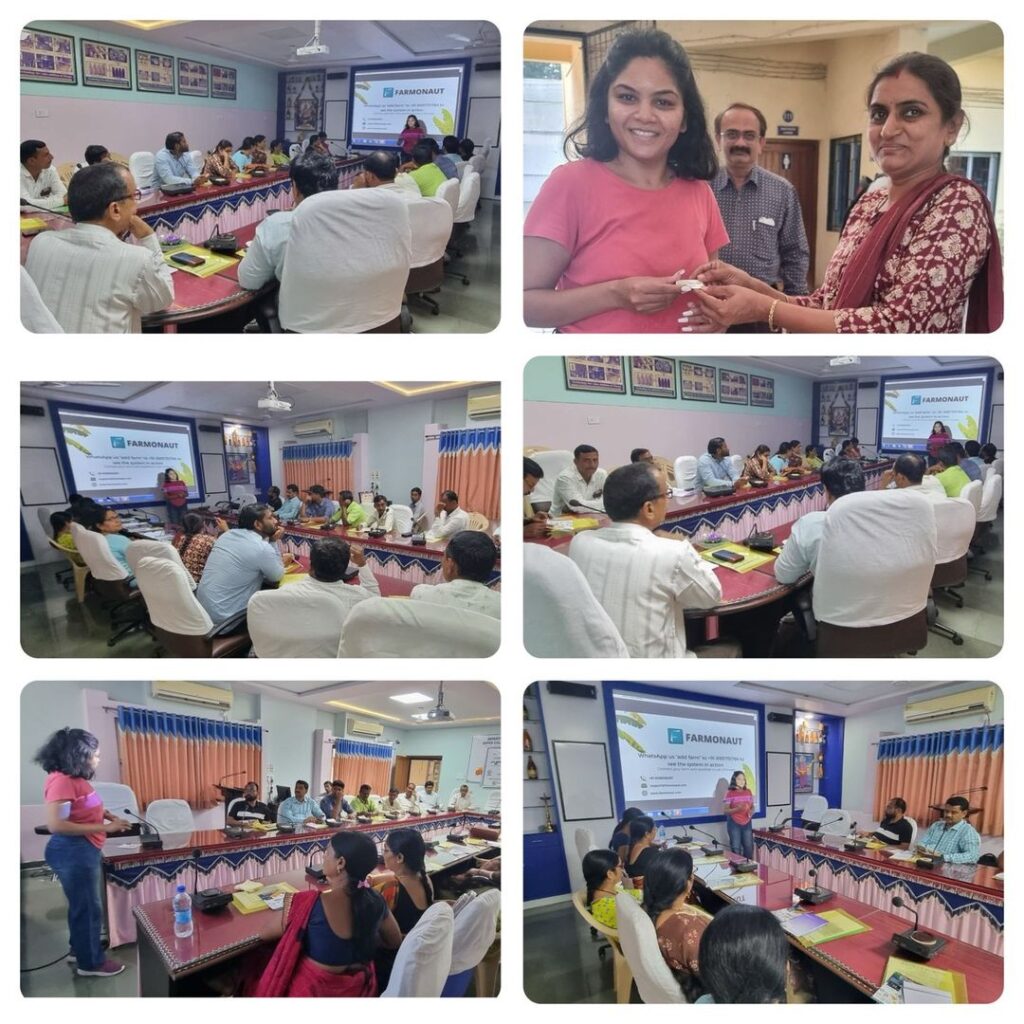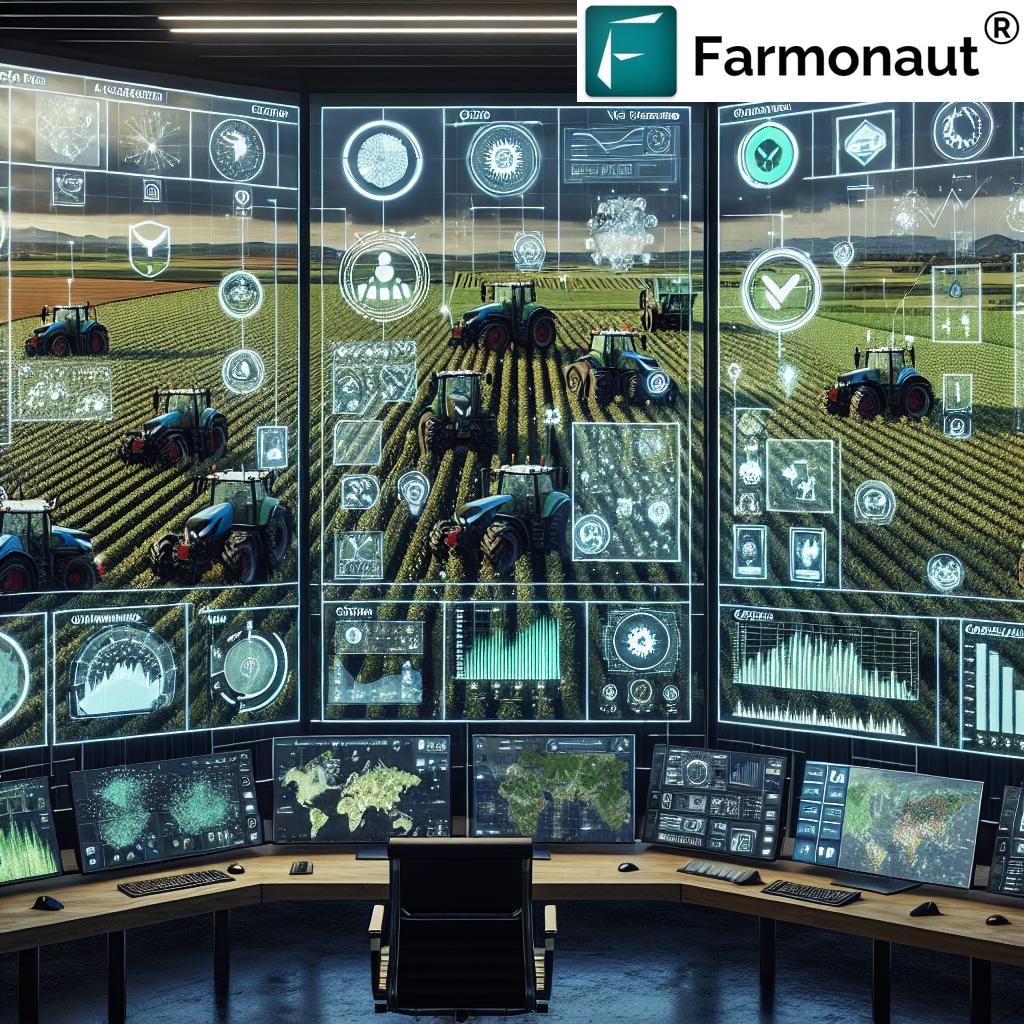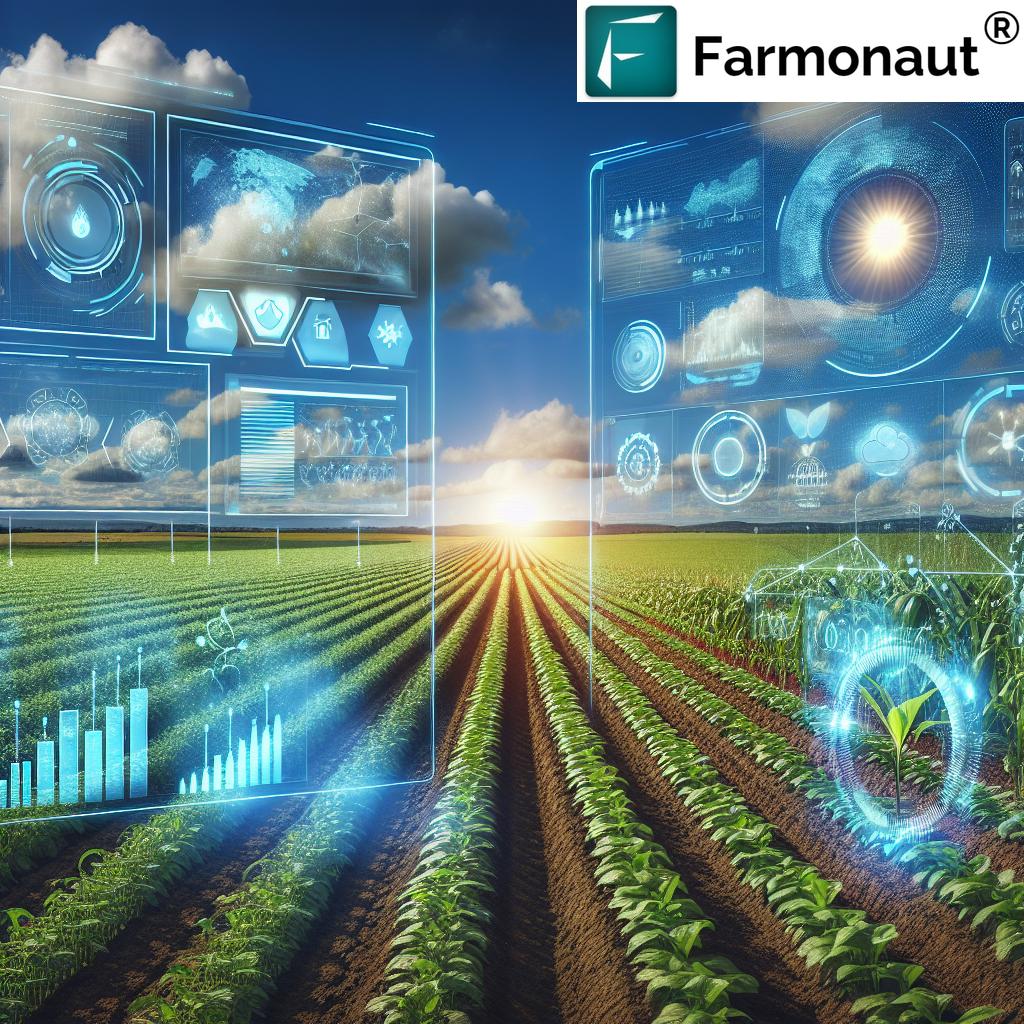Table of Contents
- Introduction: AgTech and Its Revolutionary Role
- 1. Precision Agriculture & IoT Integration
- 2. Machine Learning and Data Analytics in Agriculture
- 3. Mobile Farm Management Apps
- 4. Automated Pest Detection Systems
- 5. Variable Rate Application (VRA)
- 6. Nanotechnology in Agriculture
- 7. Hydrogel Technology for Soil and Water Stewardship
- Additional Game-Changers: Drones & Cloud Computing
- Comparative Impact Summary Table
- Farmonaut: Making Precision Agriculture Accessible
- Key Benefits & Use Cases From Farmonaut Solutions
- Challenges and Considerations
- Frequently Asked Questions (FAQ)
- Conclusion: The Future of Application Development in AgTech
“Precision agriculture can increase crop yields by up to 20% through data-driven resource optimization.”
Application Development in Agriculture: 7 Game-Changers
Advancement in agriculture technology has revolutionized how we, as farmers, agronomists, and agricultural professionals, address classic challenges in food production, soil health, and sustainability. Today, the integration of application development—commonly known as AgTech—ensures that innovation sits at the heart of modern farming practices. This powerful transformation leverages a suite of tools: the Internet of Things (IoT), artificial intelligence (AI), machine learning (ML), data analytics, and more, delivering enhanced efficiency, sustainability, and productivity to farms and forestry sectors worldwide.
At the forefront of this movement is precision agriculture. Through technologies like IoT in farming, mobile farm management apps, machine learning in agriculture, and cloud computing in agriculture, we are not only maximizing crop yields but also optimizing our resource allocation, reducing waste, and paving the way for more sustainable agricultural practices.
In this comprehensive guide, we will explore the seven transformative agri-tech game-changers and how their integration is boosting productivity, enabling better decisions, and driving the evolution of the global agriculture industry.
1. Precision Agriculture & IoT Integration: The Bedrock of Smart Farming
Precision agriculture is fundamentally altering the way we manage field variability and optimize every inch of our fields. By employing IoT devices and advanced analytics, we are now able to monitor critical metrics such as soil moisture, temperature, and nutrient levels in real-time.
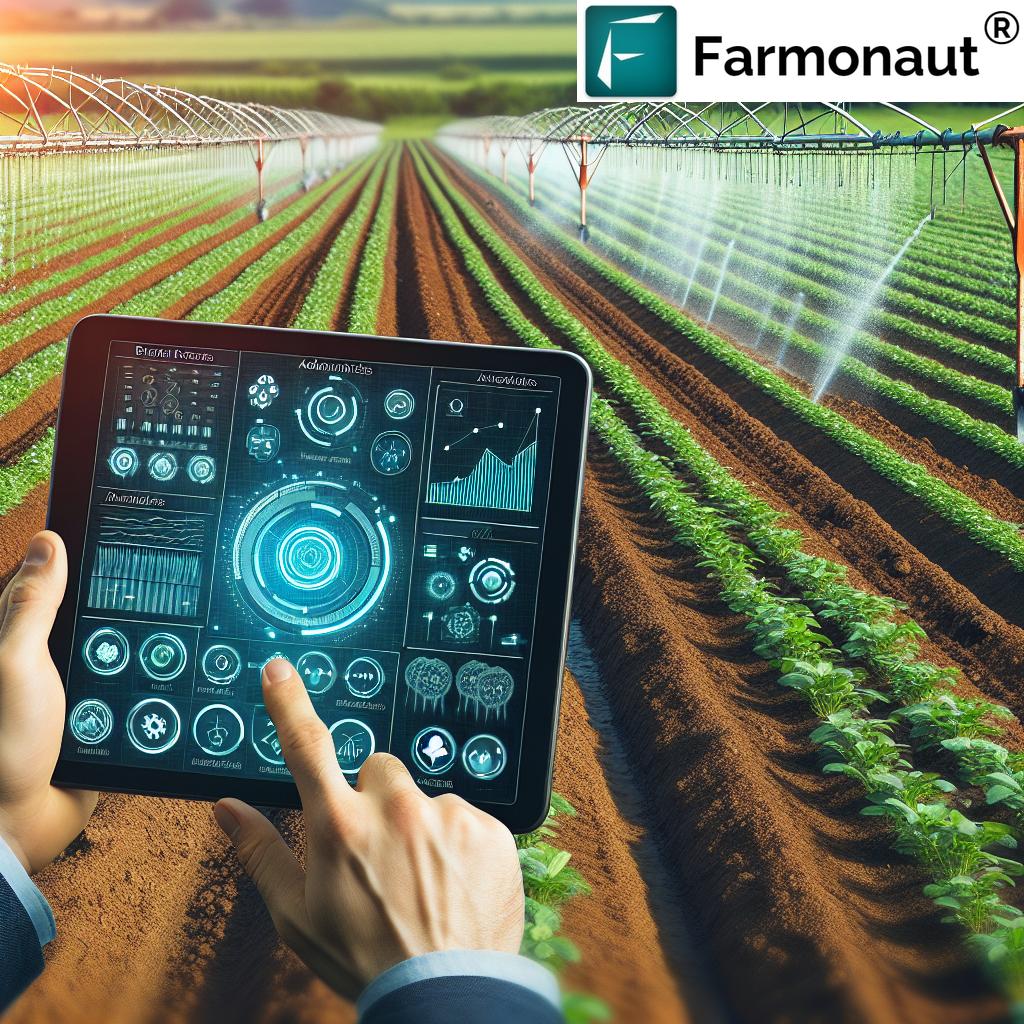
By utilizing IoT in farming, our farms are hooked into networks of sensors and devices that feed data into central management systems. With this constant stream of field-level information, we can now automate vital processes such as irrigation and fertilization. For example:
- Soil moisture sensors automate irrigation based on real-time data, ensuring optimal water usage and reducing waste.
- Nutrient sensors track the levels available to crops, so our fertilization schedules and inputs become data-driven and highly efficient.
- Integrating variable weather forecasts allows for precise scheduling of farm operations, thus minimizing damage from environmental variability.
By embracing precision agriculture, we maximize yields, optimize resources, and move towards sustainability in every acre we tend.
If you’re looking for a cloud-based solution to monitor your fields via satellite (for vegetation index, soil health, and more), explore Farmonaut App—a platform designed to democratize access to precision agricultural applications globally.
Key Focus Keywords: precision agriculture, IoT in farming, monitoring, soil, moisture, sensors, irrigation, technology, optimize, efficiency, applications
2. Game-Changer: Machine Learning and Data Analytics in Agriculture
Another core advancement in agriculture technology is the deployment of machine learning and AI-driven data analytics. With the growing avalanche of data from sensors, satellites, field devices, and mobile applications, machine learning in agriculture empowers us to analyze, model, and forecast scenarios with unprecedented precision.
- Predicting Crop Yields: By combining historical data with sensor and satellite inputs, ML algorithms can forecast the yields of specific crops, helping inform our resource allocation and farm planning.
- Optimizing Resource Usage and Inputs: Recommendations for fertilizer, water, and pesticides are now tailored for each field based on processed analytics, reducing waste and optimizing yields.
- Disease and Pest Detection: AI and machine learning models rapidly detect patterns that indicate crop stress, diseases, or pest infestations, allowing us to intervene early and effectively.
Farmonaut’s AI-powered Carbon Footprinting tools leverage advanced algorithms to help us track emissions, suggesting farm management optimizations for more sustainable outcomes. By analyzing farm operations and satellite-based inputs, our environmental impact is minimized—a crucial step towards sustainable agriculture.
Keyword Focus: machine learning in agriculture, analytics, algorithms, AI, monitoring, data, forecast, accuracy, resource allocation, planning, sustainability, systems, applications, detection, optimize, crop, yields, technology
“Machine learning in agriculture reduces fertilizer use by 15%, promoting both efficiency and sustainability.”
3. Game-Changer: Mobile Farm Management Apps

The mobile revolution has reached the farm. Modern farm management apps put real-time analytics and decision-making tools into the palms of every farmer. From smallholdings in rural communities to large-scale agribusinesses, these apps offer:
- Crop Monitoring: Satellite and sensor integration display current crop health, growth stages, and alerts for stress or disease.
- Equipment Tracking: Manage tractors, combines, and agricultural machinery usage patterns for improved field efficiency and reduced breakdowns—boosting productivity and minimizing expenditure.
- Market Price Tracking: Real-time commodity updates help us make savvy decisions on when and where to sell produce for best returns.
- Expert Advisory: Chat features or AI tools connect us with agronomists and experts for rapid troubleshooting, often with image upload and processing support.
Among the leading platforms, Farmonaut brings a feature-rich web and mobile experience, integrating satellite crop health monitoring, AI-advisory, and much more in one user-friendly platform—no special hardware required!
For developers looking to build custom solutions for farm management, Farmonaut offers full API access to their satellite and weather platforms. Expand your application’s capabilities:
– Farmonaut Satellite API |
– API Developer Documentation
4. Game-Changer: Automated Pest Detection and Advanced Monitoring
Pest infestations can devastate crops and entire harvests. Thanks to advanced AI, edge computing, and embedded systems, we are moving toward automated pest detection—detecting early warning signs of invasive threats before major damage occurs.
- AI-powered sensors and cameras continually scan crops (orchards, fruit plantations), identifying insects, larvae, and pest signatures using image analysis.
- Automated alerts notify us and our agronomists of hotspots or trends requiring intervention, drastically reducing unnecessary pesticide usage and intervention time.
- Integration with drones and scouts enables focused, precision spraying, minimizing the chemical footprint and enhancing the overall crop health.
With real-time insight, we proactively manage infestations and lower our reliance on chemical pesticides. This shift not only saves inputs but also supports regulatory compliance and ecosystem health.
Interested in supply chain transparency for pest and input management? Check out Product Traceability by Farmonaut—using blockchain to ensure the entire journey from field to end consumer is both transparent and trustworthy.
5. Game-Changer: Variable Rate Application (VRA) for Inputs
Traditional input application methods often lead to overuse of fertilizers and pesticides, resulting in increased costs and environmental risk. The solution? Variable Rate Application (VRA).
- Using data from satellite imagery, soil sensors, and maps, VRA technologies enable us to apply fertilizers, pesticides, or herbicides at different rates tailored to precise field management zones.
- This system minimizes waste and ensures that materials are only used where and when they’re needed—leading to higher yields, lower costs, and improved sustainability.
- Environmental impact—such as chemical runoff and greenhouse gas emissions—is significantly reduced.
Farmonaut’s Large Scale Farm Management provides data-ready VRA maps and input management dashboards designed for agribusinesses and organizations overseeing vast, multifield operations.
Primary Focus Keywords: variable rate application, VRA, materials, field, inputs, fertilizers, pesticides, minimize, optimize, sustainability, resource allocation, analytics, advanced
6. Game-Changer: Nanotechnology in Agriculture—Tiny Tools, Huge Results
Nanotechnology introduces a new frontier in managing soil health, detecting pathogens, and tracking environmental changes. Nanosensors—smaller than a human hair—can be embedded in fields to assess the chemical and biological makeup of soil and plants in real time.
- Monitor key variables: nutrient levels, pH, soil contaminants, and potentially hazardous residues.
- Enable precise input management and early detection of crop stress or disease, lowering input costs and reducing environmental risk.
- Foster a deeper understanding of plant-health interactions at the molecular level, paving the way for optimized genetics and tailored crop protection protocols.
Our growing adoption of nanotechnology signals a commitment to smarter, more sustainable, and evidence-based agronomy. When integrated with mobile or cloud platforms, these sensors empower next-level precision agriculture for the benefit of farms large and small.
To explore a full feature set of monitoring soil and crop health, try the Farmonaut App, offering smart satellite solutions at the intersection of nanotechnology, AI, and IoT.
7. Game-Changer: Hydrogel Technology for Soil and Water Stewardship
Water scarcity remains a persistent challenge for agriculture in many global regions. Hydrogel technology steps in as a revolutionary solution—these superabsorbent polymers retain water in the soil, releasing it gradually in response to plant demand.
- Ideal for arid, drought-prone areas, hydrogels dramatically cut irrigation frequency.
- Enhance seed germination and root establishment through improved moisture retention.
- Reduce water and resource consumption, supporting sustainability efforts and lowering operational costs.
Coupled with smart irrigation management platforms, hydrogels offer a technology-enabled way to ensure that every drop of water counts—vital for sustainable production and environmental preservation.
Combine this tech with Farmonaut’s advanced satellite-backed crop insurance for reliable, data-driven climate resilience solutions on your farm.
Additional Game-Changers: Drones in Agriculture & Cloud Computing Integration
Drones in Agriculture: Aerial Intelligence for the Modern Farm
Unmanned Aerial Vehicles (UAVs), or drones, have become ubiquitous in technological crop monitoring. These tools grant us a bird’s-eye view over extensive fields, delivering multispectral imagery, thermal maps, and high-resolution photos directly to our farm management apps.
- Rapidly assess plant health, spot stress areas, and survey for pests or disease outbreaks with minimal time investment.
- Enable precision application—targeted spraying limits chemical waste and labor costs while maximizing impact.
- Generate site-specific maps to aid in planning and resource allocation.
Farmonaut’s fleet management module even helps you coordinate field machinery and drone operations, leading to enhanced logistics and impeccable input timing on large farms.
Cloud Computing in Agriculture: Data, Storage & Remote Management
Scalable, flexible, and always accessible—cloud computing in agriculture provides powerful data storage and analytics without the on-site infrastructure overhead.
- Securely store and access massive volumes of field data, imagery, and machine learning outputs—critical for multi-season and multi-site operations.
- Collaborate with agronomists or advisory teams across distances, making truly data-driven decisions anytime, anywhere.
- Utilize advanced analytics platforms for modeling, forecasting, and optimizing all aspects of farm management.
Cloud integration is central to Farmonaut’s user-centric approach—offering always-on, mobile, and browser-ready interfaces for budget-conscious smallholders as well as tech-forward agribusinesses.
Focus Keywords: drones in agriculture, cloud computing in agriculture, aerial, uavs, monitoring, management, tools, analytics, remote, decisions
Comparative Impact Summary Table: 7 Game-Changing Applications in Agriculture
| Application Name | Core Technology | Primary Benefit | Est. Yield Improvement (%) | Resource Optimization (Savings) | Sustainability Impact |
|---|---|---|---|---|---|
| Precision Agriculture & IoT | IoT, Sensors, Data Analytics | Enhanced yield, input efficiency | 15–20% | Water savings up to 30%; fertilizer savings 18% | Reduces waste; improves ecosystem health |
| Machine Learning & Data Analytics | AI, ML, Satellites | Predictive insights, precision targeting | 10–15% | Fertilizer and pesticide savings 10–20% | Decreases excess input/runoff |
| Farm Management Apps | Mobile, Cloud, AI | Real-time management; informed decisions | Up to 10% | Labor savings up to 10%; lower machinery costs | Supports sustainable operations |
| Automated Pest Detection | AI, Embedded Devices | Reduced crop loss; targeted response | 5–8% | Pesticide use up to 15% less | Less chemical impact on soil/water |
| Variable Rate Application (VRA) | GPS, Analytics, Remote Sensing | Resource-efficient input application | 7–12% | Input savings up to 25% | Reduces emissions, runoff |
| Nanotechnology in Agriculture | Nano-sensors | Precise soil/crop monitoring | 4–7% | Detects early stress, reducing excess inputs | Improves micro-level sustainability |
| Hydrogel Technology | Hydrogel Polymers | Water retention; drought resilience | 4–8% | Reduces irrigation up to 30% | Conserves water; protects against drought |
Farmonaut: Making Precision Agriculture Accessible for All
While the aforementioned agricultural technologies are revolutionizing fields worldwide, Farmonaut stands out by making these advanced agri tools accessible, scalable, and affordable to a diverse base of users.
- Satellite-Based Crop Health Monitoring: Using multispectral imagery, Farmonaut provides farmers with detailed insights about vegetation health (e.g., NDVI), soil moisture, nutrient status, and field anomalies—all on an easy-to-use dashboard.
- AI-Driven Jeevn Advisory: Real-time, personalized crop management strategies integrate weather forecasts, crop stage evaluations, and risk detection, all powered by AI and ML.
- Blockchain-Based Traceability: Maintain trustworthy, tamper-proof records with Farmonaut’s transparent product tracking modules, strengthening the credibility of agri-produce along the supply chain. Ideal for companies tracking sustainable sourcing. More at Product Traceability.
- Fleet Management and Carbon Footprinting: Optimize vehicle usage, track emissions, and improve logistic flows even in large plantations. See the Fleet Management Solution for high-impact operations.
- Crop Loan and Insurance Verification: By leveraging independent, satellite-based field verification, Farmonaut enables financial organizations (banks, insurers) to offer better, fraud-resistant products. More on Crop Loan & Insurance.
- API & Developer Access: Integrate insights directly into your digital farm products with Farmonaut’s API and check the developer documentation here.
Farmonaut’s Subscription Options:
Key Benefits & Use Cases From Farmonaut Solutions
- Individual Farmers: Real-time satellite-based crop and soil monitoring to make rapid, data-driven decisions—without expensive hardware.
- Agribusinesses: Scalable, centralized dashboards for plantation management, resource allocation, and fleet tracking. Manage multiple fields with advanced analytics.
- Government & NGOs: Monitor large-scale crop health and area for productivity programs, subsidy distribution, and sustainable policy planning.
- Financial Institutions: Data-backed field verification prevents insurance and loan fraud, ensuring more efficient and fair processes.
- Corporate Supply Chains: Blockchain integration for transparent, trustworthy product journey audits—ideal for sustainability certification and quality control.
- Research & Development Teams: Access bulk satellite and weather data for custom agri-tech application development via Farmonaut API.
All of these features are available via Farmonaut’s browser platform, Android, and iOS applications—making precision agriculture truly accessible.
Challenges and Considerations in AgTech Adoption
As we move forward with agriculture technology and application development, several challenges persist:
- High initial investment: While many solutions pay off over time, the upfront cost can be a barrier, especially for smallholder farmers.
- Data Privacy and Ownership: With more cloud storage and analytics, it’s essential to safeguard sensitive farm information and maintain trust across the value chain.
- Training and Digital Literacy: Broad adoption requires ongoing support and education to ensure all users can maximize these applications’ potential.
- Infrastructure Limitations: Reliable internet access and mobile device availability remain inconsistent in some rural areas, potentially slowing down agtech solutions’ integration.
Addressing these challenges will require collaborative efforts across technology developers, policymakers, educators, and the farming community to bring sustainable, equitable innovation to all farms.
Frequently Asked Questions (FAQ) about Application Development in Agriculture
-
What is precision agriculture?
Precision agriculture is a set of technology-driven farming practices that use data (from IoT, sensors, satellite, and analytics) to monitor and optimize field variability, input use, and management for improved crop yield and sustainability. -
How do IoT devices help farmers?
IoT devices capture real-time information on soil moisture, temperature, crop growth, and more, enabling automated irrigation, timely fertilization, and informed resource management decisions. -
Can smallholder farmers use agtech solutions?
Yes! Platforms like Farmonaut are designed to be affordable and scalable, offering accessible web, Android, and iOS interfaces that deliver advanced insights even for farms with limited resources. -
What are farm management apps?
These are digital tools on mobile or web that let farmers monitor crops, manage equipment, track inputs, communicate with experts, and access market prices—all from their phone or computer. -
What are the main benefits of machine learning in agriculture?
Machine learning models provide accurate crop predictions, early disease and pest detection, prescription-based input recommendations, and better overall resource allocation for higher yields and greater sustainability. -
Is traceability important in agriculture?
Absolutely. Blockchain-based traceability solutions ensure transparency from farm to consumer, which is critical for food safety, sustainability certification, and supply chain management.
Conclusion: The Future of Application Development in AgTech
The transformation of agriculture through application development is not only an exercise in productivity—it is a leap forward for efficiency, sustainability, and data-driven decision making. Innovations like precision agriculture, IoT in farming, machine learning in agriculture, and integrated farm management apps are democratizing access to actionable insights, safeguarding our soil, water, and crops, and steering us toward a better-fed, more resilient future.
With scalable platforms like Farmonaut—leveraging AI, satellite data, cloud computing, and blockchain—we’re finally equipped to bridge the gap between modern technology and traditional farming wisdom. The journey ahead will require us to adapt, collaborate, and innovate continuously. By adopting these game-changing applications, we empower every farmer, agronomist, and agribusiness to optimize their practices, protect the environment, and secure livelihoods across the globe.
Together, let’s embrace the agricultural revolution powered by technology.





